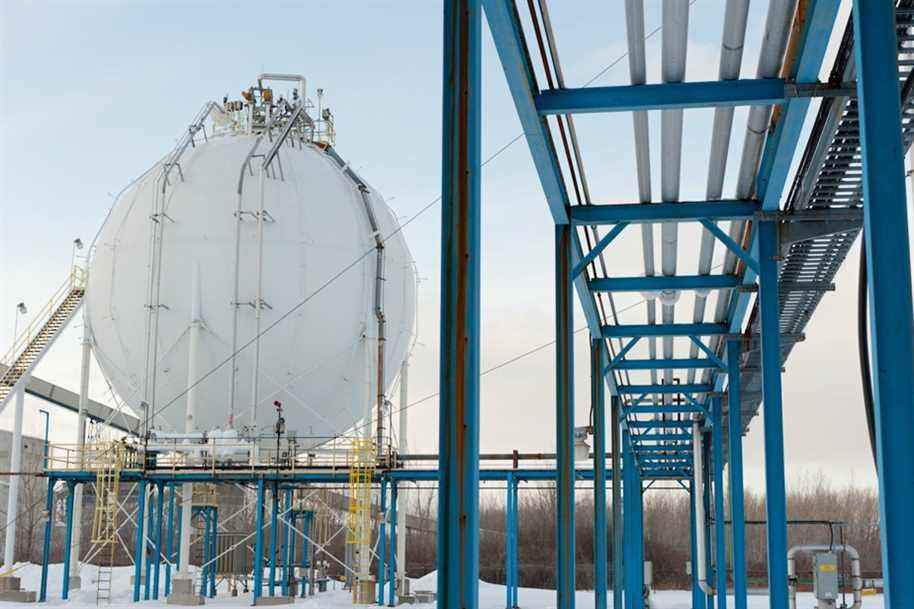Green hydrogen could become a gold mine for Quebec, but unless you invest quickly, it will be overtaken by countries that have already started to develop this sector, such as Germany and Australia.
There is an urgent need to act, estimates a study carried out by the Montreal branch of the firm Boston Consulting Group (BCG), that Press was able to get. “Quebec is not investing enough in this market and runs the risk of missing a great opportunity to act”, summarizes Simon-Pierre Monette, partner and general manager of the Montreal office and one of the authors of the study.
Since the start of the year, the hydrogen industry has been in turmoil in Quebec. The multinational Air Liquide has invested to double its production in Bécancour. Hydro-Quebec has announced an investment of 200 million to build a hydrogen production plant in Varennes, and a joint venture formed by Greenfield Global and the German Hy2gen will also invest in Varennes in the production of green hydrogen.
For its part, the Quebec government announced for the fall a first Quebec strategy for the production of green hydrogen.
“It’s encouraging to see these projects, but we can do more,” explains Simon-Pierre Monette. Green hydrogen will be essential for the energy transition and will allow the largest emitters of greenhouse gases (GHGs), such as steel and heavy transport, to free themselves from fossil fuels.
Boston Consulting Group predicts that by 2040 the green hydrogen market could reach 290 billion globally. North America alone could account for up to 21% of the estimated annual demand of 40 to 146 megatonnes in 2040, numbers that could increase further.
Countries like Germany and Australia are in the process of positioning themselves in this emerging market. “Quebec is uniquely positioned and it must take advantage of it because its advantage is likely to diminish,” says Simon-Pierre Monette.
Time is running out, according to him, because the window offered to Quebec does not exceed 10 years. “It might sound generous, but it’s not, because this type of project takes a long time to materialize. ”
We must invest not only in the production of green hydrogen, but also in its uses. “You have to stimulate demand at the same time as you feed it. ”
Quebec has many strengths, according to BCG.
Clean and available energy
The availability of clean energy is one of Quebec’s main assets to become the leader in the green hydrogen sector. In addition to producing hydrogen that stands out from others derived from fossil fuels, it is possible to develop a whole sector of the future in derivative products and in the technology and equipment for producing and distributing hydrogen. Quebec can play a role in the entire value chain, believes BCG, which gives the example of the rail sector.
“There is also a real opportunity for Quebec to support the H2 in the rail sector by investing along the value chain, from locomotive engine design, refueling infrastructure, service and maintenance of trains. ”
A very low price
Green hydrogen costs more to produce than hydrogen from natural gas or coal. The additional cost is between $ 1.50 and $ 2 per kilogram in the production of ammonia, illustrates the study of BCG. The price of green hydrogen is expected to drop by 30% to 60% over the next 10 years, thanks to the decrease in the cost of renewables.
Quebec can already produce green hydrogen at a cost 50% lower compared to Ontario and neighboring New England states.
The production cost of green hydrogen in Quebec, estimated at $ 3 per kilo, is also competitive on a global scale, where production costs are between $ 3 and $ 6.55 per kilo.
Proximity to markets
Hydrogen is transported by truck or pipeline, but at a high cost. Quebec can take advantage of its proximity to markets where demand will be strong. Steel mills and refineries will use more and more of it. Ontario, New York State and New England are expected to consume up to 150,000 tonnes of green hydrogen per year by 2030, BCG estimates. It represents $ 300 million.
The proximity to the most interesting markets is an important advantage because the transport of hydrogen over a distance of 1000 kilometers can increase the cost by 50%, illustrates BCG.

